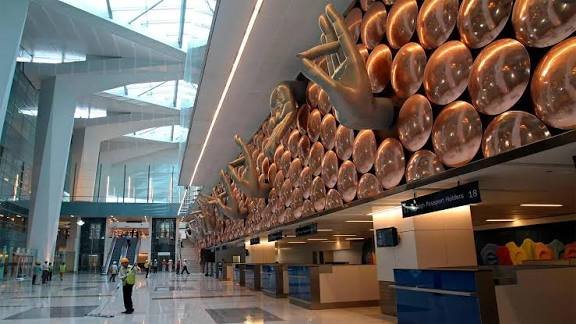NEW DELHI: A rare system failure at Delhi’s Indira Gandhi International Airport disrupted air traffic for nearly a full day, exposing the fragility of India’s aviation automation backbone. As authorities investigate whether the collapse of the Automatic Message Switching System was a technical fault or something more sinister, the incident has raised urgent questions about cyber readiness and infrastructure oversight.
When the Heart of Air Traffic Fell Silent
For over twelve hours on Friday, one of the busiest airports in the world ran on manual mode. Flight controllers at Delhi’s Indira Gandhi International Airport — accustomed to screens flashing live data on aircraft movements — suddenly found themselves jotting down notes by hand. The Automatic Message Switching System (AMSS), the digital network that transmits flight plans, clearances, and weather updates across India’s aviation grid, had crashed around 9 a.m.
By the time engineers restored it at 9:30 p.m., more than 800 flights had been delayed and at least 20 cancelled. Passengers queued at boarding gates for hours as congestion rippled outward from Delhi to Mumbai, Bhopal, Chandigarh, and Amritsar.
“It was like stepping back two decades,” said one Air Traffic Control (ATC) official. “Everything had to be done by hand.”
The Airports Authority of India (AAI) confirmed later that evening that the system was “active and working properly.” But by then, the damage was done — and the questions had just begun.
Inside the System That Keeps the Skies in Sync
The AMSS is the digital nerve center of Indian air traffic. Every flight plan — its route, altitude, fuel, and destination — flows through this network. It automatically transmits information to ATC towers, other airports, and concerned airlines, updating in real time when weather shifts or routes change.
On a normal day, the system handles thousands of messages per hour: when a flight takes off or lands, delays or diversions, airspace warnings, and even minute-by-minute fuel adjustments.
“It’s what keeps every aircraft in Indian airspace coordinated,” explained a senior AAI engineer. “If AMSS stops, you’re blind.”
That’s exactly what happened on Friday. With automatic messages halted, controllers had to relay every clearance manually. The slowdown cascaded through the entire system — clearances delayed, departures rescheduled, arrivals held. The result: an average delay of fifty minutes across all flights, according to tracking data from FlightRadar24.
Warnings Ignored, and the Shadow of a Cyber Threat
ATC sources described the failure as “unprecedented,” not merely for its duration but for its nature. The system had never gone dark for so long since its installation. Some officials suspect a deeper cause. A malfunction originating from one terminal had frozen the entire network — a failure pattern, they noted, consistent with coordinated cyber interference.
Late Friday, the central government convened a high-level meeting at the National Security Advisor’s office, summoning officials from AAI, airport security, and cyber agencies to assess whether the outage could have been triggered externally. The possibility of a cyberattack, though unconfirmed, remains under investigation.
Compounding the unease were earlier warnings. The ATC Guild of India had reportedly alerted AAI in July to “deficiencies in the airport’s automation system” and requested urgent upgrades.
“We had raised red flags about vulnerabilities, but no action was taken,” an ATC official said
A Wake-Up Call for Aviation Infrastructure
Friday’s glitch was more than a technical inconvenience; it was a glimpse into the vulnerabilities of India’s rapidly digitizing aviation sector. The AMSS was introduced to replace cumbersome manual procedures with seamless automation — a symbol of modernization. Yet, the same dependency on digital precision has created a new kind of fragility: one that can grind an entire network to a halt with a single point of failure.
The AAI has promised improvements, and officials insist that AMSS is being continuously upgraded. But for passengers stranded in terminals and controllers rewriting flight clearances by hand, the incident served as a sobering reminder that even the most advanced systems can falter.
“Technology is the backbone of aviation,” said one senior air traffic officer. “But when the spine bends, everything above it shakes.”


